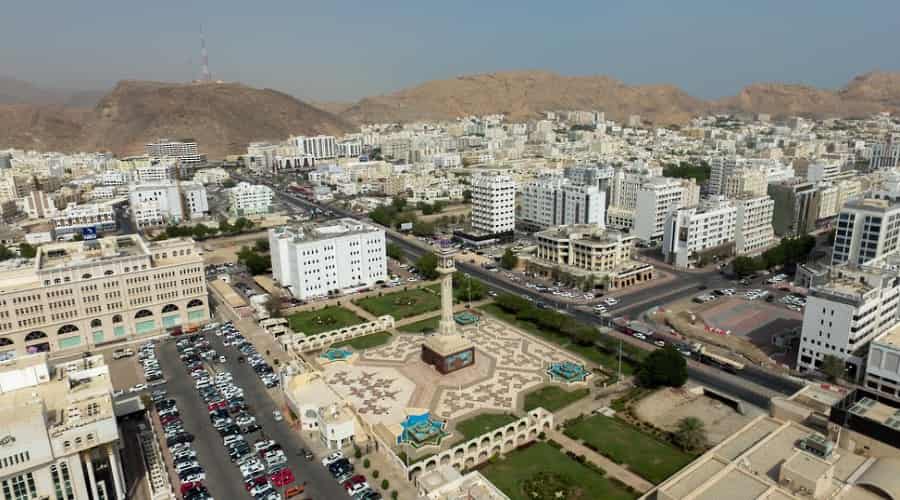In a significant development for Oman’s economy, the country’s broad money supply has witnessed a substantial increase, growing by 11 percent to reach a total of $64.5 billion. This growth marks a key economic milestone for the Sultanate, reflecting both the financial sector’s resilience and the broader economic recovery. Broad money, which includes the total money supply available in the economy—such as cash, checking deposits, and easily accessible savings—has a direct impact on inflation, interest rates, and overall economic activity. The recent surge in Oman’s broad money supply suggests a series of changes that are worth exploring in greater detail, especially in the context of the global economic environment and Oman’s domestic financial landscape.
Understanding Broad Money Supply
Broad money is an important economic indicator used to measure the total amount of money circulating within an economy. It includes various forms of money, such as currency in circulation, demand deposits, and certain types of savings accounts. Broad money typically includes:
- Currency in Circulation: The physical money (banknotes and coins) circulating in the economy.
- Demand Deposits: Funds in checking accounts and other accounts that are readily accessible.
- Time Deposits: Savings accounts with fixed terms but can be converted into liquid cash.
- Other Liquid Assets: Investments and instruments that can easily be turned into cash.
In Oman’s case, the growth of broad money by 11 percent to $64.5 billion is an indication that there is an increased flow of liquid funds within the economy. This growth has been driven by various factors, including banking sector dynamics, changes in domestic consumption, and broader trends in regional and global financial markets.

Key Factors Behind the 11 Percent Growth in Broad Money Supply
The growth in Oman’s broad money supply can be attributed to several economic factors. These include monetary policy changes, improved banking sector performance, increased liquidity from oil exports, and a general uptick in economic activities.
1. Government Stimulus and Economic Recovery:
The global economic downturn caused by the COVID-19 pandemic significantly impacted Oman, like many other countries. To counter this economic slowdown, the government introduced stimulus measures, such as cash transfers, loans, and subsidies aimed at supporting businesses and individuals. These efforts have led to an increase in money circulation, as more funds flowed into the economy, helping to spur domestic demand and consumption.

In addition to government stimulus, Oman’s economic recovery in 2024 has played a role in the broad money growth. As the economy began to recover from the impacts of the pandemic, there was an increase in investment activity, spending, and business transactions, all contributing to the growth in broad money.
2. Oil Price Resurgence and Export Revenues:
Oman’s economy remains heavily dependent on oil exports, which make up a significant portion of the country’s revenue. In recent months, global oil prices have experienced a resurgence, providing a boost to Oman’s financial sector. The increase in oil revenues has allowed the government to maintain a steady flow of funds into the economy, further contributing to the growth of the broad money supply.
Higher oil prices have also boosted foreign investments and business confidence, which has led to greater liquidity in the economy. As the revenue from oil exports strengthens, Oman’s financial institutions are better positioned to lend more and meet the growing demand for credit, which adds to the expansion of broad money.
3. Monetary Policy Adjustments by the Central Bank:
The Central Bank of Oman (CBO) has played a crucial role in managing the country’s money supply through its monetary policy. To support the economy, the CBO has kept interest rates relatively low, making it easier for businesses and individuals to access credit. This has encouraged borrowing and spending, further boosting the overall money supply.
Additionally, the central bank’s policies around liquidity injections into the financial system have also contributed to the increase in broad money. These policies are often used to stabilize the banking system, promote lending, and ensure that the economy has sufficient liquidity to function smoothly.
4. Expansion of the Banking Sector:
Oman’s banking sector has experienced significant growth and modernization in recent years. With the expansion of both domestic and foreign banks operating within the Sultanate, there has been a rise in available credit. The banking system has adapted to meet the growing demand for loans, mortgages, and other financial products, further stimulating economic activity and adding to the increase in broad money.
The availability of credit is crucial in encouraging business expansion, housing investments, and consumer spending. The increased liquidity in the banking system has made it easier for businesses to obtain financing for expansion and for individuals to access loans for personal needs, such as purchasing homes and vehicles.
Implications of Increased Broad Money Supply
The growth of Oman’s broad money supply has several important economic implications, both positive and negative. Let’s explore some of these impacts in greater detail.
1. Positive Economic Growth and Consumer Confidence:
An increase in the money supply can be a positive indicator of economic growth. As businesses and consumers gain access to more liquid assets, they are more likely to spend, invest, and borrow. This drives demand, stimulates production, and creates jobs, all of which contribute to a healthier economy.
The increase in liquidity may also improve consumer confidence, as people feel more financially secure. This, in turn, could lead to increased consumption of goods and services, further stimulating economic growth.
2. Inflationary Pressures:
While the growth in broad money supply can stimulate the economy, it can also lead to inflationary pressures if not managed properly. If the money supply grows too rapidly relative to the production of goods and services, it can result in too much money chasing too few goods. This leads to an increase in prices, or inflation.
In Oman’s case, while inflation has been relatively moderate, the expansion of broad money could lead to higher inflation in the future. The Central Bank of Oman will need to monitor inflationary trends carefully and adjust its monetary policy as needed to prevent excessive price rises.
3. Increased Foreign Investment:
The growth in broad money supply, fueled by higher liquidity, can make Oman an attractive destination for foreign investors. Increased liquidity and a growing economy present opportunities for international businesses to invest in Oman’s real estate, energy, and financial sectors. As a result, the country could see an uptick in foreign direct investment (FDI), contributing to long-term economic growth and diversification.
4. Potential Risks of Over-Borrowing:
While the availability of credit is beneficial for businesses and consumers, it can also pose risks if borrowers take on more debt than they can manage. As loans become more accessible, there is a potential for over-leveraging, which could lead to financial instability if businesses or individuals default on their obligations. This risk underscores the need for prudent financial planning and responsible lending practices in Oman’s banking sector.
Future Outlook for Oman’s Money Supply and Economy
The outlook for Oman’s money supply and economy appears generally positive, especially if the current momentum in the oil market continues. The broad money supply’s growth, combined with the recovery from the pandemic, presents an opportunity for economic diversification and further investment in sectors such as tourism, manufacturing, and technology.
However, managing the potential inflationary risks and ensuring sustainable growth will be crucial. The Central Bank of Oman will likely continue to monitor economic indicators closely, adjusting interest rates and policies as needed to maintain a balance between stimulating growth and controlling inflation.
Conclusion
Oman’s broad money supply reaching $64.5 billion and growing by 11 percent signifies a positive shift in the Sultanate’s economic trajectory. This growth is reflective of government policies, oil revenue boosts, and expansion in the banking sector. While the increased liquidity in the economy presents opportunities for growth and investment, it also raises concerns about inflationary pressures and the risk of over-borrowing. The future of Oman’s economy will depend on how these factors are managed, and the Central Bank’s role in regulating money supply will be pivotal in ensuring that the country’s economic recovery remains stable and sustainable.
Do follow Uae stories For more Updates
Traffic File Number Dubai: Unlocking Easy Access and Solutions














